Pot stickers are either the serendipitous result of a Chinese chef’s negligence and his son’s blatant disregard for truthfulness, or the product of an ancient Chinese Emperor’s terrible disguises and even worse punctuality.
In either case, we’re the winners. Pot stickers employ perfect textural contrast – crispy on the bottom, chewy and soft on the top. They’re filled with deliciousness and are just the right size to not feel bad about eating 10 or more. And they’re not that difficult to make. It’ll take some practice, but before long you’ll be cranking out platters of these delights – and watching them disappear just as quickly.
Now, let’s discuss the two candidates competing for the title of The True Pot Sticker Origin Story:
The Good Son (or, Liar Liar)
Between the two contenders, this one is definitely the favorite. It appears the majority of the time when conducting research, and an article with a variation of this story from The San Francisco Chronicle is often cited.
This one takes place during the Song Dynasty (960-1280 A.D.) and features the Chef of the Chinese Imperial Court. It was traditional to cook up a batch of dumplings to serve to court members, and this chef had done it so many times it was second nature. Dumplings were cooked by steaming them in a shallow amount of water in a wok, and on this fateful day, the chef let his mind wander and forgot about the dumplings. The water evaporated, and the dumplings stuck to the wok and burned on the bottom.
Not sure what to do, and not having enough time to make another batch, he consulted his clever son. The son told the father to present them as a new creation with an intentionally-crispy exterior. The court members loved them, and the pot sticker was born.
The Emperor’s New Clothes (or, Better Late Than Never)
While not as popular a tale, I was able to find this one listed in three places. It has its own kind of charm.
This story comes from a later time, during the Ming Dynasty (1368-1644 A.D.). Emperors during this time would often dress in disguise while out on road trips and stop at various food and drink places when needed. One Emperor wasn’t particularly good at disguises and wasn’t particularly good at keeping his itinerary secretive.
The chef of a well-known eatery caught wind that the Emperor might be stopping by in search of dumplings, and decided it would be a good idea to prepare them ahead of time. A beautiful tray of dumplings prepared, the chef waited for the disguised Emperor to arrive…. And waited. And waited.
Finally, near the end of the day, the Emperor arrived. The chef, concerned about serving the Emperor cold dumplings, chose to heat them in a wok. They ended up with crispy edges, and the Emperor loved them. He asked the chef what they were called, and the chef – surprised by their success – couldn’t think of an answer. The Emperor suggested, guotie, Mandarin for “stuck to the wok,” and the pot sticker was born.
锅贴
I’m not sure which one is the true story (or if either one is accurate), but both plausibly explain the process of cooking pot stickers, which is one of the hardest parts of this recipe to get used to. It goes against every instinct to purposely let food burn, but once you get past that, and practice the routine a few times, the results are worth the discomfort.
By the way, you may hear pot stickers and gyoza used interchangeably, and that’s okay, although technically there are differences. Japanese soldiers in WWII were exposed to pot stickers and liked them so much that they tried to replicate them at home (in fact, gyoza is the way the Japanese soldiers pronounced guotie). While similar enough to use comparatively, as I will in this recipe, gyoza tend to be a bit smaller with a finer filling and are often made with pre-made, thinner wrappers.
Having said that, what we’re making here is kind of a hybrid – Japanese characteristics with Chinese flavors and techniques. They’re created with pre-made wrappers but the filling is not terribly fine.
They’re also apparently referred to as Peking Ravioli in the Boston area, which is something I can neither confirm nor explain. What you all call things on the East Coast is often mysterious to me.
Anyway, let’s talk about pot stickers. First, the wrappers. The ones I use are from the supermarket, nothing fancy. They are actually labeled as gyoza wrappers and are located in the produce section, at least at the Safeway where I shop. They may appear at a different spot in the market for you but will definitely be refrigerated. You can make pot stickers with square wrappers, but the traditional shape uses round wrappers.
The filling is simple, and can be changed up easily depending on your preferences. Here’s what you’ll need to mimic my recipe (along with ground pork and some corn starch to bind):
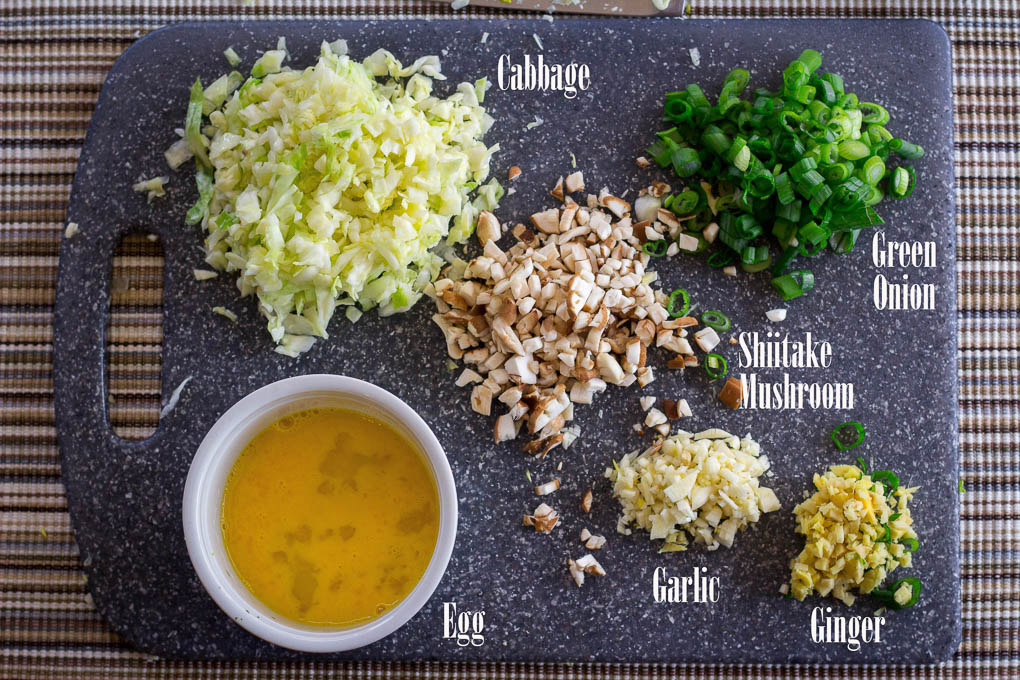
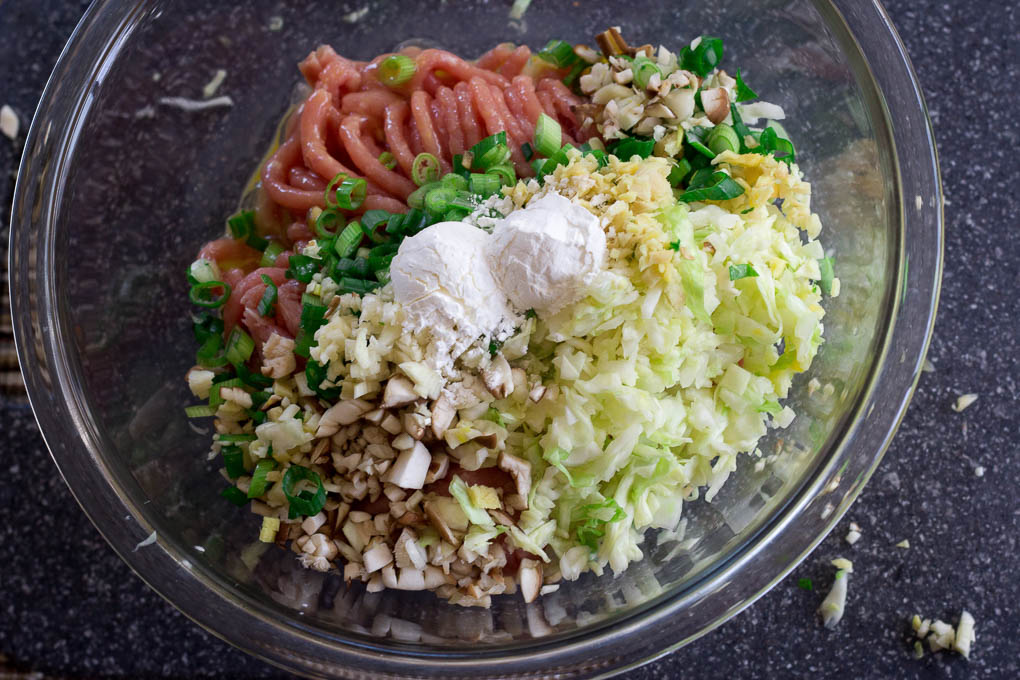
Get everything mixed together in a big bowl and let it sit for a few minutes to come together. The filling is simple; getting it into the wrappers is the tricky part.
To start, get your wrappers opened up, but only remove them from the package one at a time as you’re filling them. Keep the rest of the package covered with a damp cloth to make sure the wrappers don’t try out – they will very quickly, and it’ll make folding them significantly more difficult. Also get a small container of water nearby to seal the edges; you can use an egg wash, but I find water to work just as effectively, and it’s much easier.
Now then, take about a tablespoon of your mixture and place it right in the center of the wrapper. Look how pretty it is.
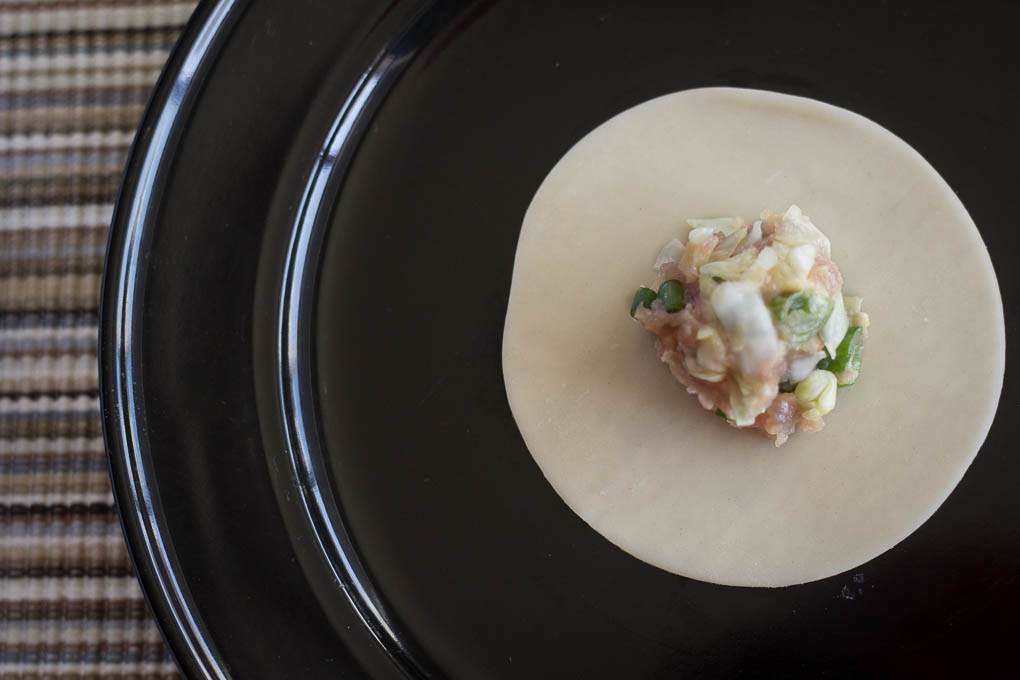
Dip your finger in the water and use it to wet the edges of the wrapper, all the way around. Now, I’m going to try to explain how to fold the wrapper, but if you’re more of a visual person (and trust experts more than a home chef), check out the videos here and here.
At minimum, you can simply fold the wrapper in half and make sure the edges are completely sealed. No frills, no stress, and a pot sticker that will do just fine. My first batch of pot stickers were made exactly that way. What’s important is that the edges are sealed so no air escapes during the steaming process.
If you want your pot stickers to look a little better – and you probably do – you can start experimenting with different pleats and folds while sealing the wrapper. The method I used was adding 4-5 folds into one side of the wrapper, then sealing it. They came out looking like this:
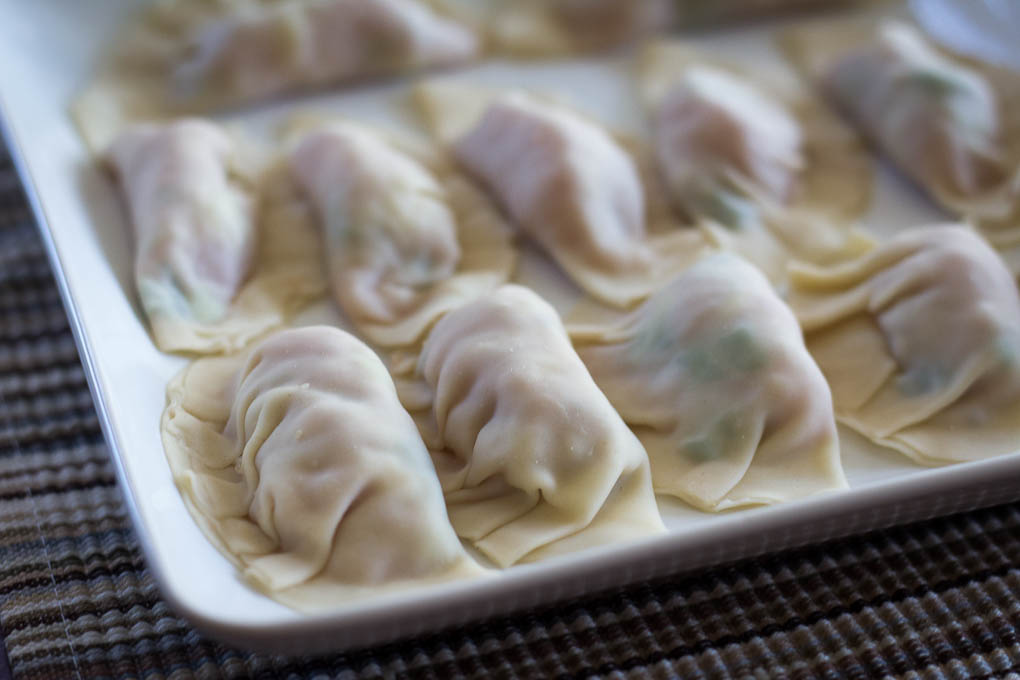
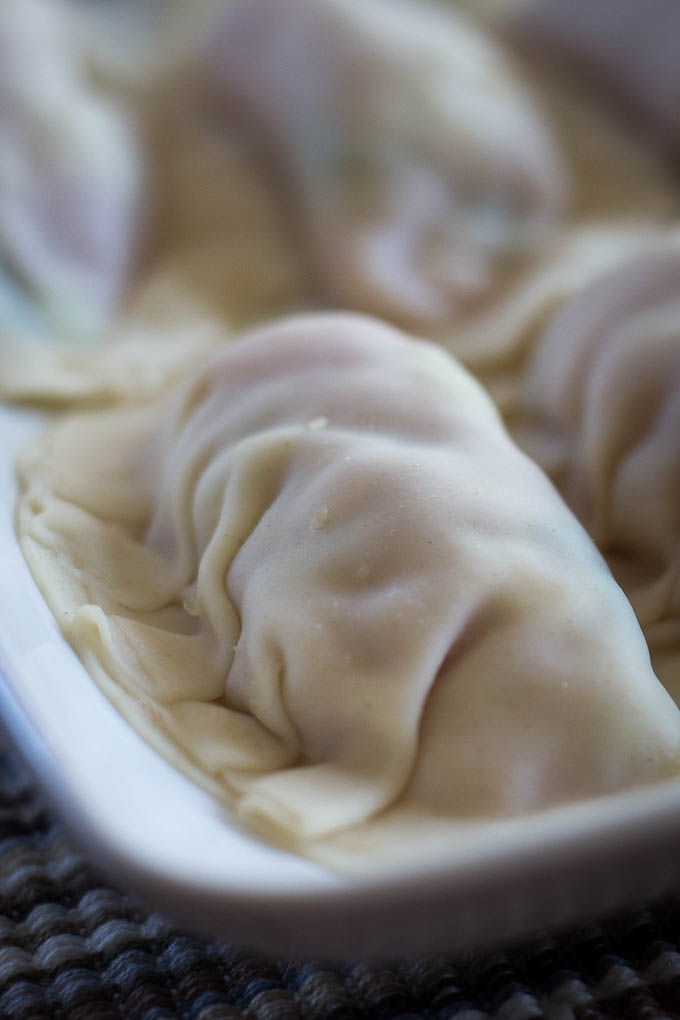
Not too bad, eh? It took me a while to get there, and a few turned out not-so-great looking (not pictured, thankfully). A little practice goes a long way here.
Once you get all of your dumplings put together, keep them under that same damp towel to make sure they don’t dry out, and let’s get to cooking them.
If you have a wok, that’s ideal. If you don’t (like me), a heavy frying pan works well. Avoid non-stick pans for obvious reasons. Get that baby cranked up to medium-high heat, and really make sure it’s heated before you begin.
Side note, the traditional cooking method was steam then fry, which gives credence to the first of our tales of pot sticker creation (the chef let all the water evaporate during the steaming process, which led to an unexpected fry). We’re going to go with the more contemporary fry then steam approach, although it’s far from universally-adopted. Many cooks will still use the steam then fry approach, with others even going fry-steam-fry.
Once your pan is hot, add a bit of oil to the bottom (we want the dumplings to stick but also get a good, even fry) and carefully place the dumplings in the pan. Now the hard part: DON’T TOUCH ‘EM. Leave them in the pan for a full two minutes with no action whatsoever. This is gonna feel weird but it’s the only way to get the results we’re seeking.
In fact, place your dumplings, then watch this video to pass the time. Or this one. Or this. (The last 2, BTW, contain some adult language. Be careful.)
Now then, time to get those stickers un-stuck. The traditional way is to add water to the pan and cover to steam; one alternative employed by culinary mastermind Alton Brown is to use a more flavorful liquid (he uses chicken stock). I’m not committed to either, so I like to go with a 50/50 method, half water and half chicken stock. Adding a little flavor to the dumplings is great in my book, but I also don’t want to overwhelm the delicate balance that’s already been established.
Procedure = simple. Dump the liquid into the pan (1/3 cup) and cover it QUICKLY. Then get the hell out of there.
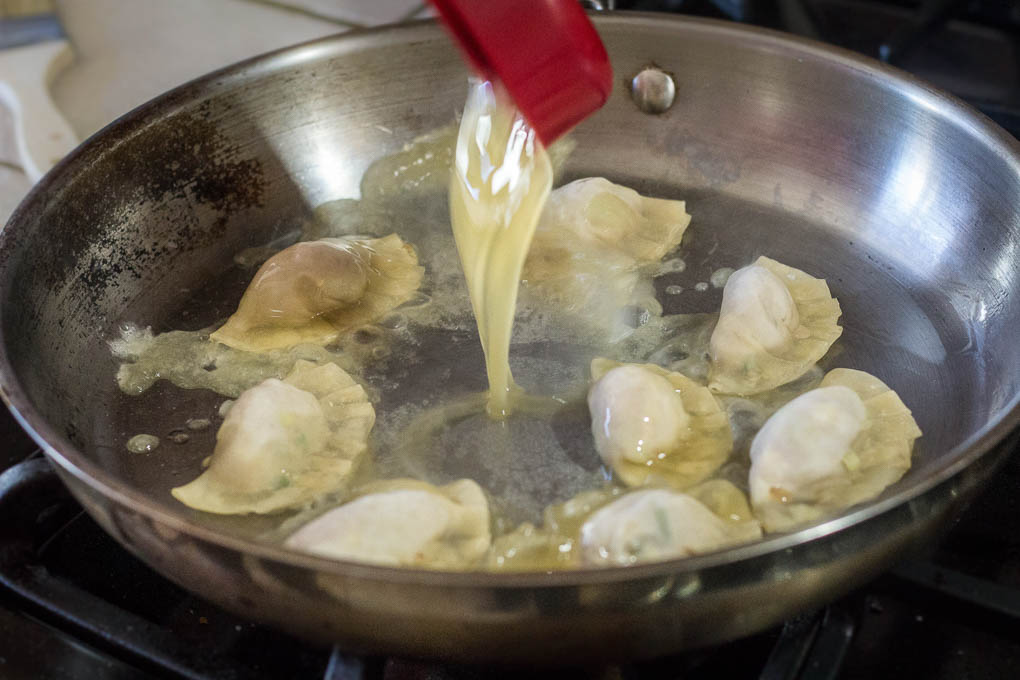
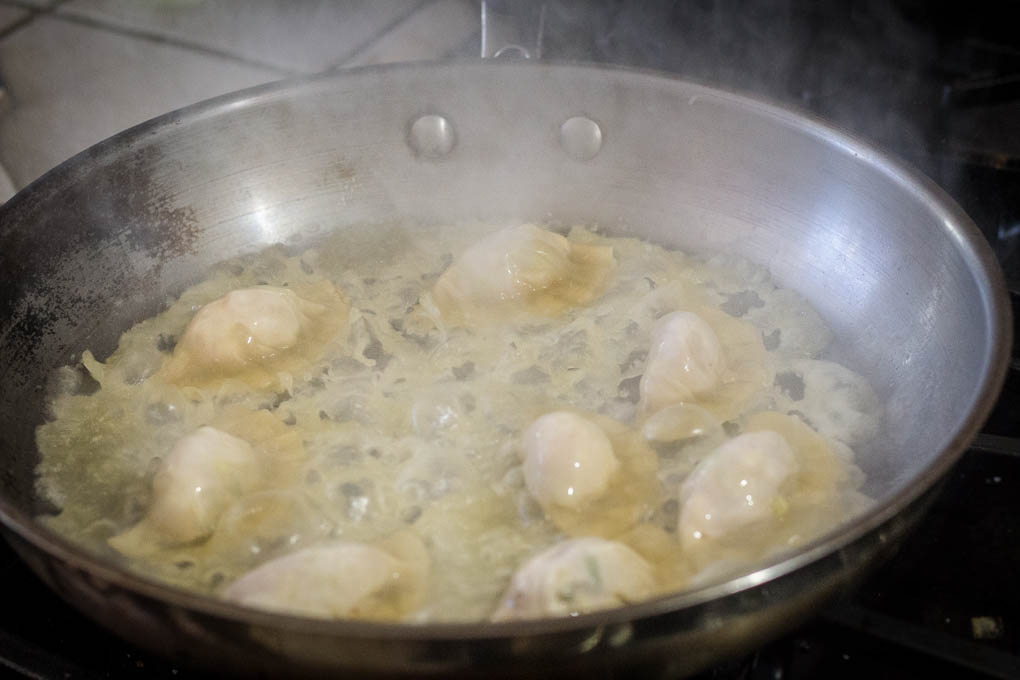
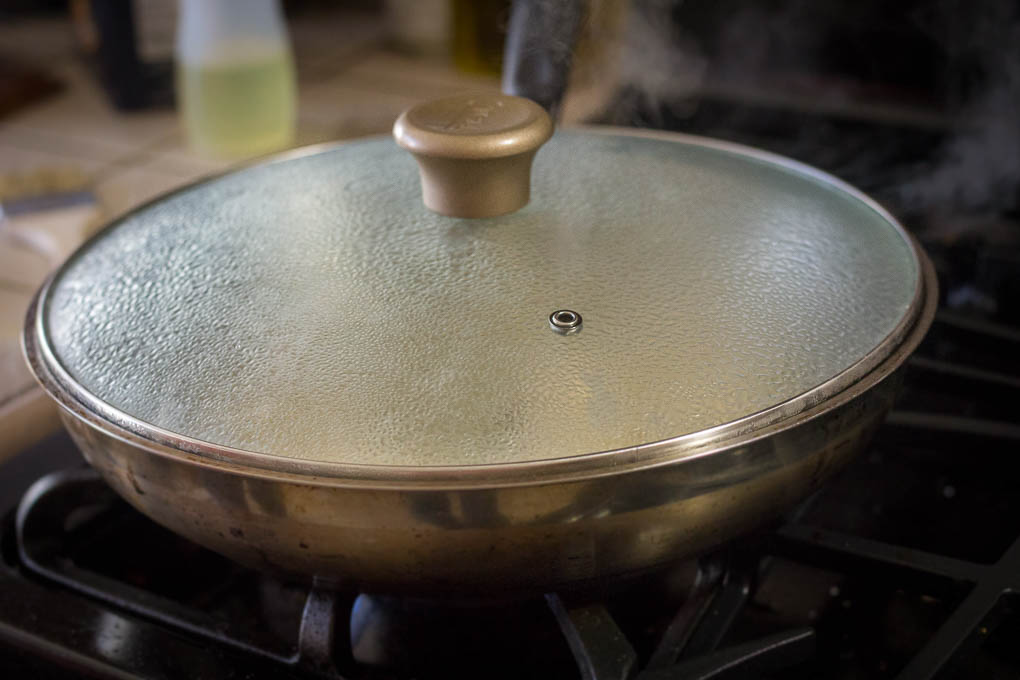
Another two minutes. If you’re a Breaking Bad fan, relive this spine-tingling scene: I AM the one who knocks.
If you’re not, check out this website to learn a new, random word. I got
MISYOKE
to yoke or marry unsuitably
Once your two minutes have passed, lift the lid and gently pry the dumplings from the pan. They should have stopped sticking by now, and you should have a golden-to-slightly-dark-brown bottom with a soft, steamed top. Wipe the plan clean and repeat the whole process.
You can eat the pot stickers straight up, or you can create a simple dipping sauce to add an extra kick. Here’s a very simple one I like to use, which I’ll admit is a bit spicy:
3 tablespoons soy sauce
2 teaspoons sriracha (or other spicy chili sauce)
2 teaspoons rice vinegar
a few drops of sesame oil (go easy, the flavor is very strong)
1 teaspoon sugar
1 clove of garlic, minced
1 teaspoon ginger, minced
chopped green onions, to top
Mix all of those together and dip your crispy creations.
请享用!
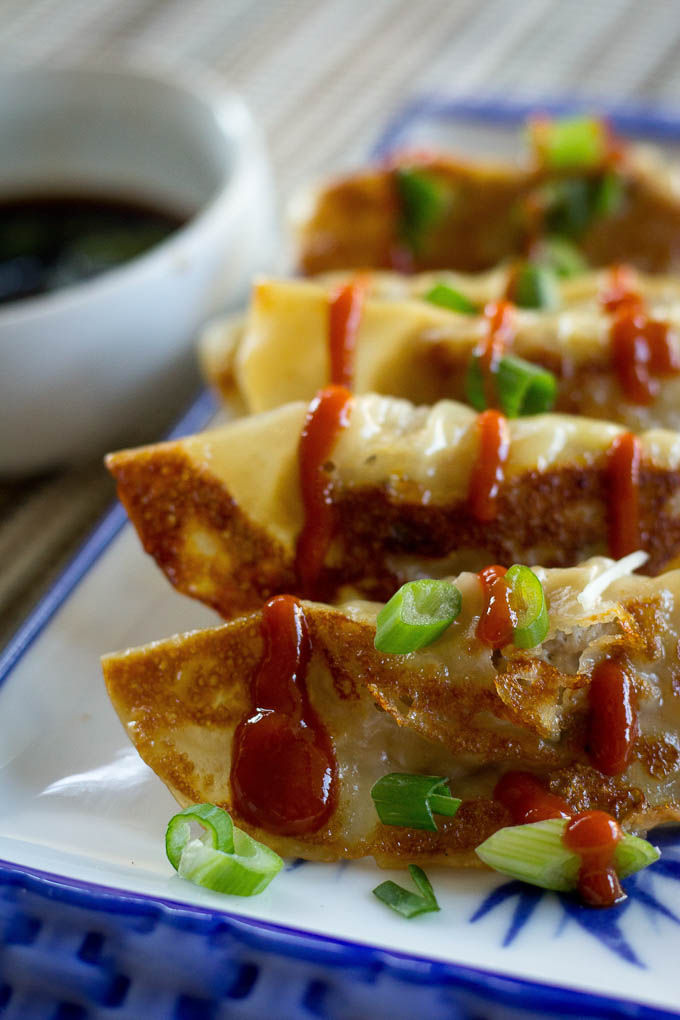
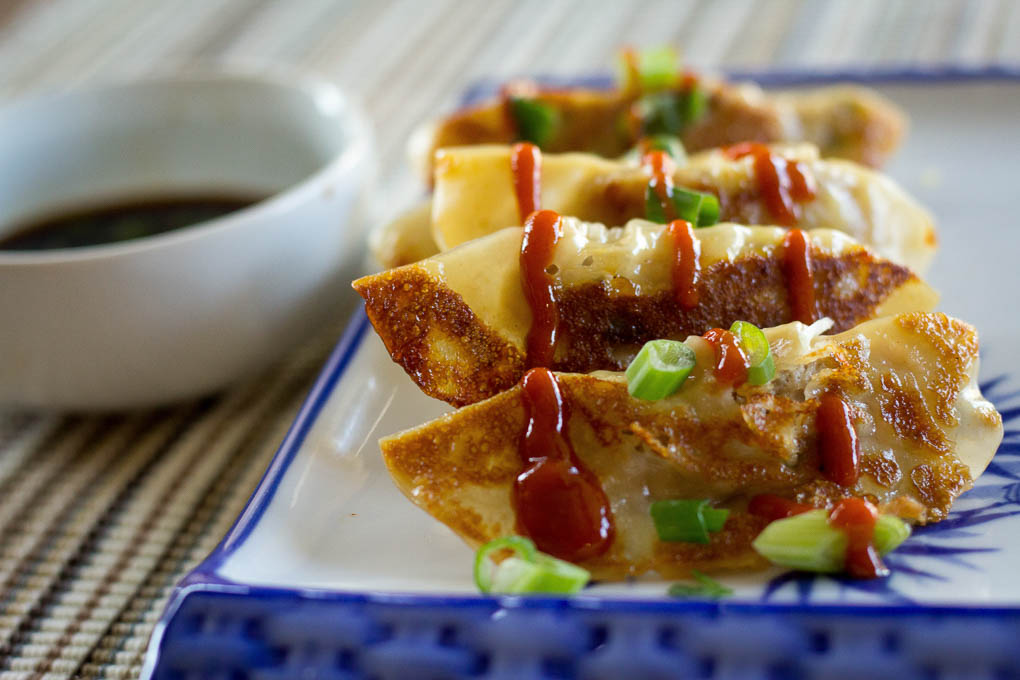
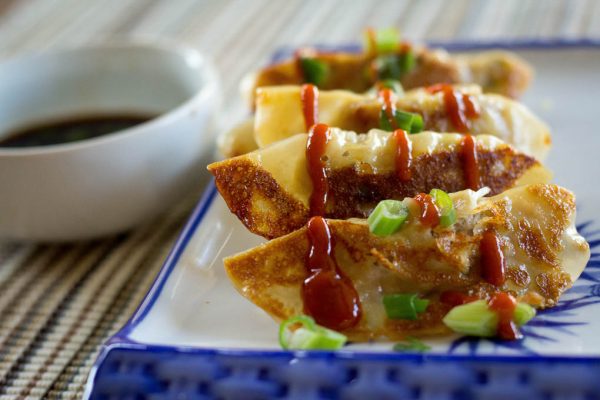
| Prep Time | 15 minutes |
| Cook Time | 20 minutes |
| Servings |
pot stickers
|
- 1 lb ground pork
- 1 c cabbage shredded
- 1/3 c shiitake mushrooms diced
- 3 green onions sliced
- 2 garlic cloves minced
- 1 tsp fresh ginger minced
- 1 egg beaten
- 1/2 tsp cornstarch
- 1 c chicken stock
- 1 c water
- 30 gyoza wrappers
Ingredients
|

|
- Mix the ground pork, cabbage, mushrooms, green onions, garlic, ginger, egg, and cornstarch together in a large bowl. Let sit for 10 minutes.
- In a separate bowl, mix chicken stock and water. Set aside.
- Open the gyoza wrappers and place the first one on a plate. Cover the remaining wrappers with a damp cloth until ready to use.
- Place 1 tablespoon of the filling in the middle of the wrapper. Wet the edges of the wrapper with water, and fold one side over to the other and seal. Repeat with remaining gyoza wrappers.
- Heat a skillet or wok over medium heat and brush with oil. Place 6-8 dumplings in the pan and do not touch for 2 minutes.
- After 2 minutes, pour 1/3 cup of the stock-water mixture into the pan and immediately cover. Let steam for 2 additional minutes without touching.
- Carefully remove the lid and gently remove the dumplings. If they continue to stick, add another small amount of water to help them loosen up. Deglaze and/or wipe the pan between batches and repeat until all dumplings are cooked. Serve immediately.
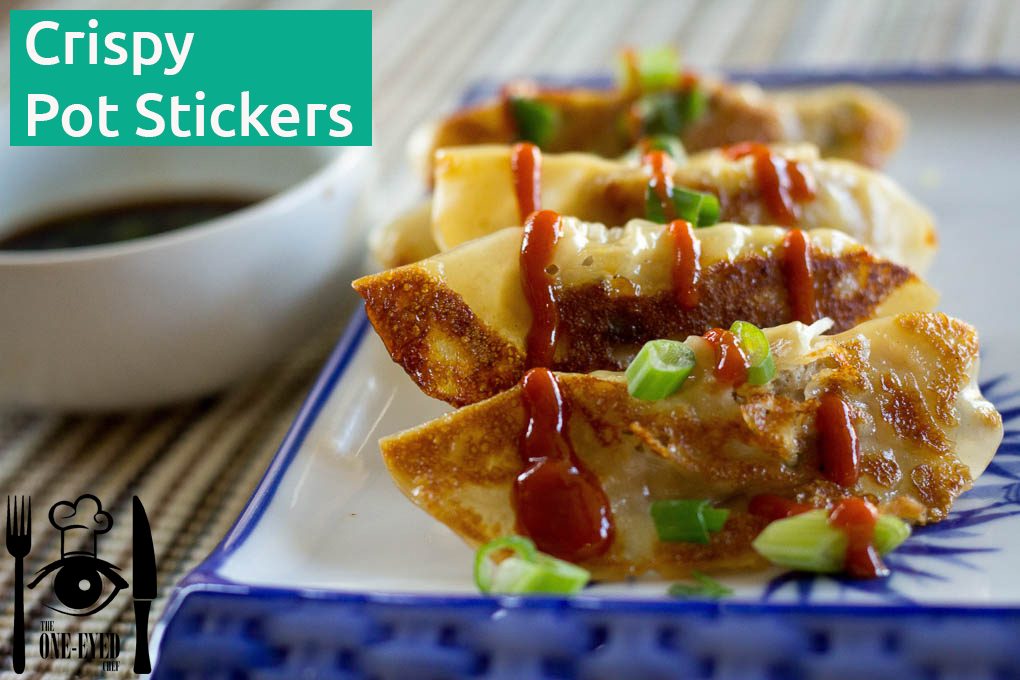


0 comments on “The world’s oldest example of “Set it and Forget it” accidentally made magic happen.” Add yours →